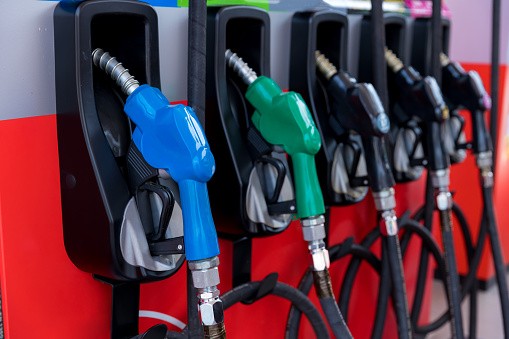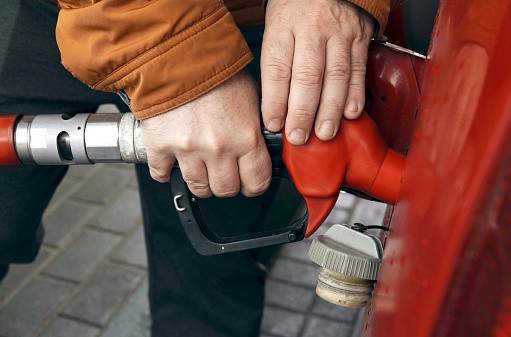Have you ever wondered how gas stations work? From the pumps to the tanks, there is a lot of machinery and technology behind the scenes that keep things running. In this article, we will take a deep dive into all the steps that must be taken in order for a gas station to function properly. Keep reading to learn all about how gas stations work!
When a tanker truck pulls into the gas station’s lot, it is equipped with a hose that connects to the underground storage tanks. The tanker truck driver will then open the valve and begin filling up the tank with gasoline or diesel fuel near me. This part of the process takes anywhere from 20 minutes to an hour or more depending on how full they need to fill it up.
Once the tank has been completely filled, it is time for them to start connecting the pumps to the tanks so customers can refuel their vehicles. Workers at the gas station will first use a special tool called a “bonding meter” which checks for any potential electrical problems between the tank and pump. If everything looks good, they will then connect hoses from the pumps to the tanks.
Once these hoses are connected, it is time for workers to begin testing the pumps to make sure that they are working correctly. This usually involves checking for any leaks or other signs of damage, making sure all of the nozzles work properly, and ensuring that each pump’s digital display is displaying the correct information. If there are any issues with the pump, they will need to be repaired before customers can start using them.
In addition to testing and repairing the pumps, gas station employees also have a few other duties that must be completed during their shifts. They must check on all of the underground fuel tanks regularly in order to make sure there are no signs of leakage or contamination. They must also stock the shelves with snacks, drinks, and other items that customers may want to purchase.
Finally, gas station workers are also responsible for ensuring that all taxes are paid on time. This includes both state and federal taxes as well as any local tax regulations that apply in their area.
Gas stations play an important role in our society by providing a convenient way to refuel vehicles so they can get from one place to another. By understanding how these businesses work and what goes into running them, you can have a better appreciation of the hard work it takes to keep them up and running!
10 Things You Didn’t Know About Gas Stations
Gas stations have been a mainstay of the American landscape for more than a century. Although we may take them for granted, there are many fascinating facts about gas stations that you might not know. From their history to the modern innovations occurring in this industry, here are 10 things you didn’t know about gas stations.
1. The first gas station opened in 1905 in St. Louis, MO. The station was owned by Gulf Oil and used an underground storage tank to store gasoline that could be dispensed into cars with hand-operated pumps. In 1912, the first drive-in service station opened in Pittsburgh, PA, and included amenities such as free tire inflation and window washing services.
2. Gasoline is one of the most heavily taxed products in the U.S., with taxes making up approximately half of what consumers pay per gallon at the pump. This money is used to fund infrastructure projects and other government initiatives across the country.
3. A typical gas station sells more than just gasoline; it is also a convenience store selling items such as snacks, beverages, cigarettes, and lottery tickets which account for a majority of profits at many locations.
4. Gasoline pumps are calibrated to ensure accurate measurements of fuel being dispensed into each car’s tank; they must be inspected regularly by certified technicians and meet strict regulations set forth by state governments as well as EPA standards for environmental protection from leaking fuel tanks or spills.
5. Most traditional gas stations rely on motor fuel tanks located underground that can hold anywhere from 1,000 – 10,000 gallons of fuel depending on the size of the station itself; these tanks must be regularly inspected for signs of corrosion or leakage so that any potential issues can be addressed before they become hazardous to public health or safety concerns nearby residents may have regarding contamination of their drinking water supply or soil quality due to leaking fuel tanks or spills from improperly maintained fueling systems at each location
6. Many modern gas stations are now utilizing new technologies such as card readers or mobile payment systems which allow customers to pay electronically rather than physically handing over cash or credit cards when purchasing gasoline; this eliminates having to manually enter information into registers while prompting customers with discounts based on loyalty programs associated with their accounts at the pump itself providing greater convenience
7. Some states have implemented laws requiring gas stations not only display prices but also post them online so consumers can compare prices between different locations before committing to purchase a certain brand or grade of gasoline; this helps shoppers make better-informed decisions when filling up their vehicles’ tanks
8. Gasoline has become increasingly complex due to additives introduced over time designed specifically for use in engines requiring higher octane ratings than what conventional fuels offer; some states require oxygenated fuels during certain times of the year due to air pollution standards whereas others mandate specific types like diesel depending on vehicle type (e g commercial trucks)
9. While most people think gasoline is derived solely from oil it actually comes from a blend made up of natural gas condensates and crude oil components before being refined into individual compounds suitable for use in combustion engines
10. As petroleum resources continue depleting alternatives such as biofuels made from plant matter or synthetic fuels produced through chemical processes are being explored as potential replacements offering environmental benefits while providing performance similar if not better than existing fossil fuels.
Conclusion:
All in all, there is much more than meets the eye when it comes to how gas stations work! From fueling up your vehicle at the pump to paying for your purchase using your credit card there are many complex pieces of machinery and technology involved in making sure everything runs smoothly behind the scenes so that drivers can fill up their cars without any hassle!
You May Also Like The Following:


